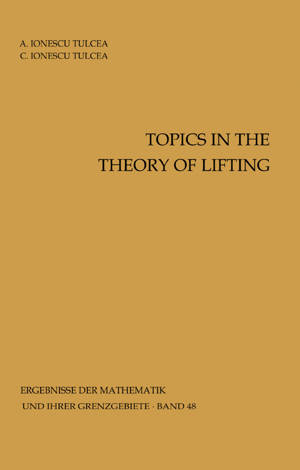
- Afhalen na 1 uur in een winkel met voorraad
- Gratis thuislevering in België vanaf € 30
- Ruim aanbod met 7 miljoen producten
- Afhalen na 1 uur in een winkel met voorraad
- Gratis thuislevering in België vanaf € 30
- Ruim aanbod met 7 miljoen producten
Zoeken
Omschrijving
The problem as to whether or not there exists a lifting of the M't/. 1 space ) corresponding to the real line and Lebesgue measure on it was first raised by A. Haar. It was solved in a paper published in 1931 [102] by 1. von Neumann, who established the existence of a lifting in this case. In subsequent papers J. von Neumann and M. H. Stone [105], and later on 1. Dieudonne [22], discussed various algebraic aspects and generalizations of the problem. Attemps to solve the problem as to whether or not there exists a lifting for an arbitrary M't/. space were unsuccessful for a long time, although the problem had significant connections with other branches of mathematics. Finally, in a paper published in 1958 [88], D. Maharam established, by a delicate argument, that a lifting of M't/. always exists (for an arbi- trary space of a-finite mass). D. Maharam proved first the existence of a lifting of the M't/. space corresponding to a product X = TI {ai, b, } ieI and a product measure J.1= Q9 J.1i' with J.1i{a;}=J.1i{b, }=! for all iE/., eI Then, she reduced the general case to this one, via an isomorphism theorem concerning homogeneous measure algebras [87], [88]. A different and more direct proof of the existence of a lifting was subsequently given by the authors in [65]' A variant of this proof is presented in chapter 4.
Specificaties
Betrokkenen
- Auteur(s):
- Uitgeverij:
Inhoud
- Aantal bladzijden:
- 192
- Taal:
- Engels
- Reeks:
- Reeksnummer:
- nr. 48
Eigenschappen
- Productcode (EAN):
- 9783642885099
- Verschijningsdatum:
- 3/10/2013
- Uitvoering:
- Paperback
- Formaat:
- Trade paperback (VS)
- Afmetingen:
- 152 mm x 229 mm
- Gewicht:
- 281 g

Alleen bij Standaard Boekhandel
+ 167 punten op je klantenkaart van Standaard Boekhandel
Beoordelingen
We publiceren alleen reviews die voldoen aan de voorwaarden voor reviews. Bekijk onze voorwaarden voor reviews.








